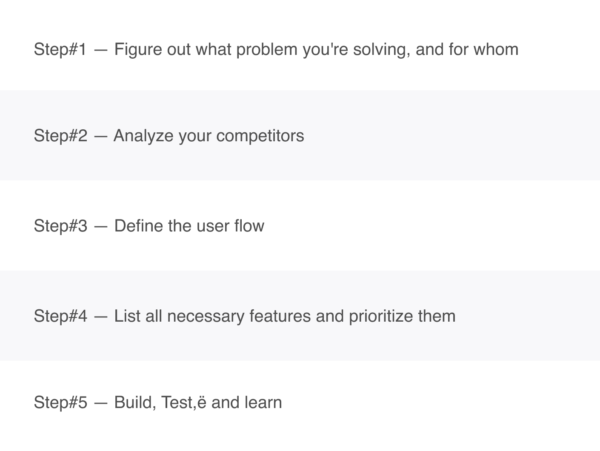As work from home became a part and employees were forced to go remote, tasks were largely done on cloud infrastructure. Explore how the cloud is changing how software development is done. Scalability is largely manual, planned, and predictive, while elasticity is automatic, prompt, and reactive to expected conditions and preconfigured rules. Both are essentially the same, except that they occur in different situations. By clicking “Post Your Answer”, you agree to our terms of service and acknowledge that you have read and understand our privacy policy and code of conduct. Scalability and Elasticity both refer to meeting traffic demand but in two different situations.
Simply put, elasticity adapts to both the increase and decrease in workload by provisioning and de-provisioning resources in an autonomous capacity. In resume, Scalability gives you the ability to increase or decrease your resources, and difference between scalability and elasticity in cloud computing elasticity lets those operations happen automatically according to configured rules. All application interactions take place with the in-memory data grid. Calls to the grid are asynchronous, and event processors can scale independently.
This is a major area where cloud computing can help, but we need to take into account the workload. Scalability and elasticity are ways in which we can deal with the scenarios described above. Automatic scaling opened up numerous possibilities for implementing big data machine learning models and data analytics to the fold.
It’s the more cost-saving choice and it’s useful for tasks and environments where the workload is stable and has a predictable capacity and growth planning. Typically, scalability implies the use of one or many computer resources, but the number is fixed, instead of being dynamic. The fact is that we talk a lot about scalability https://www.globalcloudteam.com/ and elasticity today in terms of digital transformation and cloud computing. The question is whether they imply the same thing or if they are different from one another. On the one hand, the two terms are conceptually similar as both address changing demand environments, yet they are uniquely different at the same time.
Learn more about vertical vs. horizontal scaling and which should be used when. Usually, this means that hardware costs increase linearly with demand. On the flip side, you can also add multiple servers to a single server and scale out to enhance server performance and meet the growing demand. In this healthcare application case study, this distributed architecture would mean each module is its own event processor; there’s flexibility to distribute or share data across one or more modules.

However, this horizontal scaling is designed for the long term and helps meet current and future resource needs, with plenty of room for expansion. Before you learn the difference, it’s important to know why you should care about them. If you’re considering adding cloud computing services to your existing architecture, you need to assess your scalability and elasticity needs. When a company decides to take up cloud services for its infrastructure, many things should be considered. The cost, availability, reliability, and performance are among a few of them.
By the same token, on-premises IT deals very well with low-latency needs. And to date, it’s often the trusted solution for many mission critical applications and those with high security and/or compliance demands (although that’s changing to some degree). Most organizations reevaluate resource planning at least annually or, during periods of rapid growth, even monthly. As they predict more customers, more employees, etc., they can anticipate IT needs and scale appropriately. This can happen in reverse as well; organizations can downscale in response to business fall-off, increased efficiencies, and other reasons. Scalability is an essential factor for a business whose demand for more resources is increasing slowly and predictably.

Using the example of our Pizzeria again, you notice that several large subdivisions are being developed within a five-mile radius of your store and city. You also heard that city officials are forecasting a growth rate for the area’s population that significantly exceeds prior growth projections from a couple of years ago. To meet this static growth of residents, you decide to open a second store down the road. Once both stores are open, you will, of course, utilize dynamic work scheduling to make each location as elastic as possible to meet daily demand fluctuations. It goes without saying that Automation Tools play a big part in enabling elasticity and fault tolerance.
Scalability in the cloud refers to adding or subtracting resources as needed to meet workload demand, while being bound by capacity limits within the provisioned servers hosting the cloud. Let us understand the concept of Cloud elasticity with an example. The example would also let you understand the concept of scalability vs Elasticity clearly. As mentioned earlier, Cloud elasticity works the best in a dynamic work environment like those businesses with seasonal offerings for the clients. Like the clothing, the business would take a sudden hike in the holiday or Christmas season.

Those two ensure that the resources are neither lacking nor getting wasted in anyways. The working patron of the two is different, but both share a similar motto at the end of the day. While scalability vs elasticity needs to be considered, there are some similarities that need to be highlighted too.
Say we have a system of 5 computers that does 5 work units, if we need one more work unit to be done we we’ll have to use one more computer. Also, if a new computer is purchased and the extra work unit is not needed any more, the system get stuck with a redundant resource. Scalability is pretty simple to define, which is why some of the aspects of elasticity are often attributed to it. Many of the services in AWS are scalable by default, which is one of the reasons that AWS is so successful. We’re a place where coders share, stay up-to-date and grow their careers. DEV Community — A constructive and inclusive social network for software developers.
Scalability is simply the ability of a system to add or remove resources to meet workloads within the system’s existing resources. Scalability is planned, persistent, and best meets predictable, longer-term growth and the ability to increase workloads. Elasticity, on the other hand, refers to the ability of a system to automatically scale its resources up or down in response to changing demand. An elastic system is able to automatically adjust its capacity to match the current workload, without any manual intervention.
MTTS is extremely fast, usually taking a few milliseconds, as all data interactions are with in-memory data. However, all services must connect to the broker, and the initial cache load must be created with a data reader. Meaning, your site will never go down due to increased traffic, leading to happier visitors and an increase in conversions. How to plan for a potential data storage shortage Try saying ‘data storage shortage’ five times fast. Hopefully you won’t need to say it often in the near future, but with escalating data volumes, planning is key.
Write your comment